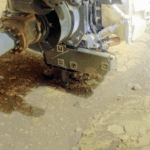2025-06-25 カリフォルニア工科大学(Caltech)
<関連情報>
- https://www.caltech.edu/about/news/new-hybrid-quantumclassical-computing-approach-used-to-study-chemical-systems
- https://www.science.org/doi/10.1126/sciadv.adu9991
量子中心スーパーコンピュータにおける厳密対角化のスケールを超えた化学 Chemistry beyond the scale of exact diagonalization on a quantum-centric supercomputer
Javier Robledo-Moreno, Mario Motta, Holger Haas, Ali Javadi-Abhari, […] , and Antonio Mezzacapo
Science Advances Published:18 Jun 2025
DOI:https://doi.org/10.1126/sciadv.adu9991

Abstract
A universal quantum computer can simulate diverse quantum systems, with electronic structure for chemistry offering challenging problems for practical use cases around the hundred-qubit mark. Although current quantum processors have reached this size, deep circuits and a large number of measurements lead to prohibitive runtimes for quantum computers in isolation. Here, we demonstrate the use of classical distributed computing to offload all but an intrinsically quantum component of a workflow for electronic structure simulations. Using a Heron superconducting processor and the supercomputer Fugaku, we simulate the ground-state dissociation of N2 and the ground state properties of [2Fe-2S] and [4Fe-4S] clusters, with circuits up to 77 qubits and 10,570 gates. The proposed algorithm processes quantum samples to produce upper bounds for the ground-state energy and sparse approximations to the ground-state wave functions. Our results suggest that, for current error rates, a quantum-centric supercomputing architecture can tackle challenging chemistry problems beyond sizes amenable to exact diagonalization.



